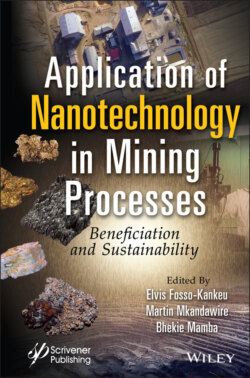Читать книгу Application of Nanotechnology in Mining Processes - Группа авторов - Страница 25
1.5 Challenges and Opportunities for the Future of Metal Mining
ОглавлениеMining activities provide the many raw materials needed for modern technology, and our future is deeply dependent on them despite their serious environmental and social impact. The use of REEs has skyrocketed, and the future demand is uncertain, which makes it difficult to control and manage their waste as the rush for these minerals hasten mining operators to dig the ore, sell the metals, and, once the deposit is exhausted, walk away and start another mine elsewhere without prior planning to clean up their waste [75]. This attitude has created a lot of unattended landfills around the world for decades now, polluting the environment. Therefore, current mining practices need to change. Moreover, all stakeholders involved need to engage more responsibly by implementing cleaner technologies to minimize their environmental threat. However, mining companies lack these technological innovations to improve the sustainability of their mining operations and require more research endeavours to assist them. However, research has proven that the voluminous tailings dams or landfills after mining activities have become a viable source for some of these precious metals, which can be more economical to recover or recycle than mine ore deposits. The formation of AMD is a viable source for REEs, and despite its environmental consequences, it has presented another option for obtaining these scarce commodities to meet their rising demand. Therefore, the technological ideas to recover REEs from AMD presented in this chapter have opened up future opportunities for mining operators to easily incorporate these cost-effective methodologies in their extraction design to clean up their waste and extract valuable metals to boost their yield and generate more income. The most important step for this technological idea is to engineer an alkaline treatment technology to optimize a high concentration of REEs in the acidic waste before using magnetic dendrimer nanoparticles to aid their recovery. The many functional groups on the surfaces of dendrimers with binding affinity to multiple metal ions are the most intriguing aspect of this technological innovation. However, the difficulty inherent with this procedure will be separating the individual REEs from each other to yield pure single elements, and this will require optimization of factors such as pH to control their recovery.
